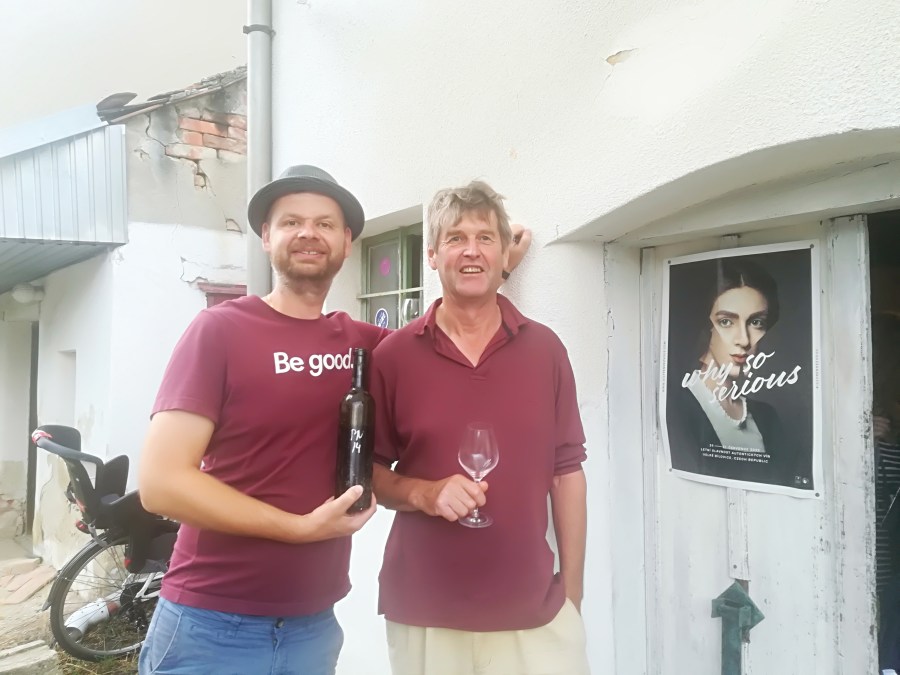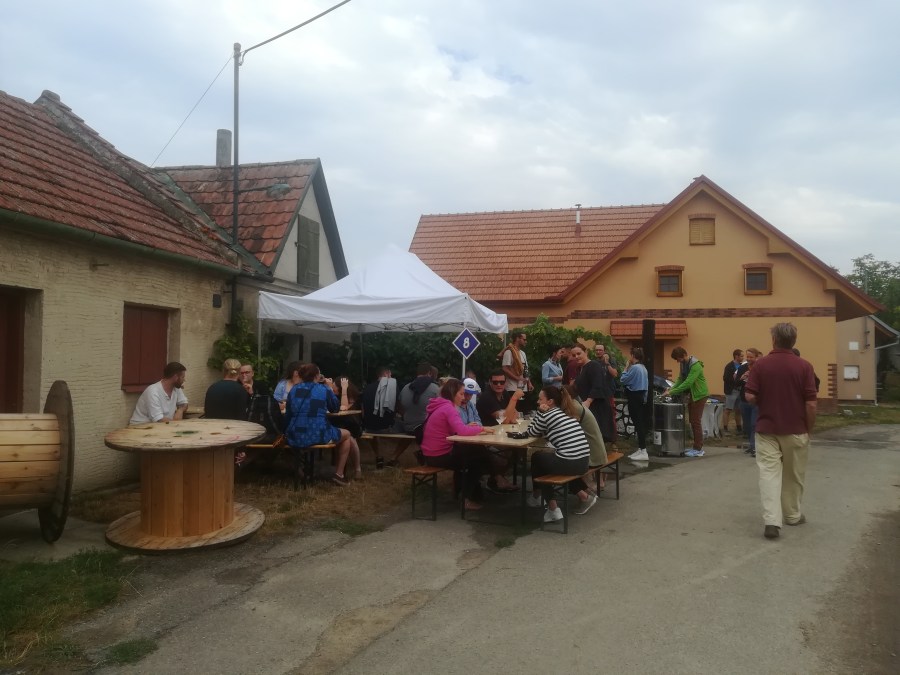Sam Doncaster has been in the Czech republic working with winemakers.
Two years ago I was working in Moravia, south east Czech Republic, which was my ‘go to bolt hole’ to continue working while Covid-19 was rife in Europe.
During my time there I attended a modest and small town ‘Authentic Wine’ event, so this present trip is a follow on from that.
Having been involved in the hand harvesting and processing of some 251 tonnes of grapes, I had a personal insight into the wine styles and methods used to gain them.
Natural Wines were made, or some such terminology, resulting in some considerable successes with exports to 50 countries. I am impressed.
Whilst this conjures up a range of thoughts as to how best to interpret the words, ‘Natural Wines,’ I’d ask readers to consider how the wine makers term their ideals; ‘Authentic’ being closer to the truth and an expression of their values within their wine making circles. Authentic as in being real, being true to their aspirational desires. Non-interventionist perhaps. On one cellar wall I came across a ‘charter’ outlining such aspirations and values.
Many a modern wine is a creation from something akin to an accountant’s balance sheet; numbers with additions and subtractions and manipulative deft handling, like a magician’s tricks in hand.
What is ‘real’?
There are analyses to be considered with subtle adjustments somewhere in the core of the wines make up. And why not? As business’s have to make money, loans need repaying, marketing guru’s suggest ‘targets’… The focus shifts to style; irrespective of a grapes inherent ability.
Years ago I heard a story, (no idea if it is true,) of an Australian wine school giving groups of students a quantity of one single variety of white grapes.
The instructions being “go away and make four varietal wines, come back in a few months and we will taste your results. We want to taste a Semillon, a Riesling, a Sauvignon and a Chardonnay.”
No doubt learning skills such as this supposes, would be of merit within some business models, but not so this past weekend.
Non-manipulation, non intervention; sounds good to me, as I do not like the idea of excessive and often unnecessary changes to life’s natural form.
I’m blessed with a history of making red wines free from sulphur addition in concrete tanks, without inoculation. This was a dozen years ago while in south west France and was successful too.
Many of the smaller, shorter family rows of vines that decorate the hills in Moravia, have a few more replants than modern wine makers are familiar with. Some rows are really quite mixed.
Likewise when it comes to picking and juice extraction, necessity of tank, or barrel filling, gives an extensive range of small blending options. This being the case in some other places around the world where perhaps 5% here, or there, is common place. But I suspect that in Moravia quite a few other perhaps less usual practices take place.
Skin contact for whites, or indeed degrees of increasing duration of such maceration. A few days and then a pressing, all to be blended into another tank. A little red put in on top of a white tank, to fill it…or the other way around.
Thus exact, defining labels suggesting ‘this is Chardonnay’ becomes a nonsense, as would be the supposed suggestion that it is made in a manner you might be familiar with.
I like the lack of restriction in such free form wine making, whilst acknowledge the skill that is needed so as to make something palatable.
Is it really possible to make wine with no manipulation, innoculation, additions, subtraction, temperature control, fining and that dollop of all embracing and saving grace, sulphur?
I think some of the wines that you come across at events like this suggest ‘yes, this is possible’. But why the initial liquid sludge does not go through step-by-step rampant populations of all manner of nature’s microbial activities, resulting in something akin to compost tea, is beyond my understanding.
However years ago the forebearers simply did not either know what we now take for common knowledge, or have the equipment to facilitate the work.
The wines of this weekend were thus authentic to non intervention views, methods, and importantly, the values of wine makers, who make wine from grapes, and for wine drinkers to enjoy, frequently while utilising limited technology.
About 20 wine makers from the region, and a little further afield, Slovakia, Bohemia, Austria, Slovenia, Hungary were gathered on the streets and in the cellars of old Velke Bilovice. This being pretty much a car-free environment.
With hillsides above and behind, vineyards and a mix of sunflowers, vines and vegetables below, in front, sun facing south and west.
Picturesque
Simple trestle tables with an awning over and above to fend off natures excesses, rain or sun, whichever bothers you, and probably an open door behind into vault like cellars.
With wine samples usually in a range of four to eight bottles, and some of which had familiar sounding varietal names emblazoned across them, (but not tasting as you know it…Jim!)
Others being a touch too zany for my ageing mind to be at ease with; my problem, not theirs.
As varietals went there were those previously unheard of, and there were wines made in a style that I was not expecting. For example there were some delightful sparkling wines, made from a range of varieties. Minimal extraction and even delicate subtle nuances; different interpretations.
Climatically this area has weather that while hot in mid summer, (peach-growing hot) has a noticeably short growing season and thus a lower heat accumulation than in the Pfalz, Germany.
One of my favourite wines was a slightly odd smelling but wonderfully flavoured Lemberger sparkling wine, red grapes/white wine.
The range of long time skin macerated whites went from merely a couple of weeks into years of duration.
Increasingly, I feel people are undertaking these ferments with lower acid variety whites, and in doing so giving better results.
Other wines were occasionally older than initially expected, with some fresh aspects in their flavour, yet were up to a decade old.
Local people occasionally plant the Acacia tree to use in their barrel making. Often in smaller sizes, it being difficult to get ‘clean’ knot free lengths of wood perhaps, and in their first year of use these impart noticeable amounts of flavour and colour into the wine, really yellow, almost surreal.
Whilst I got to hear about other wood being used, possibly Mulberry, to be honest communication is often a juggle of interpretation in the interests of simply trying to keep talk flowing.
It is not an event of multicultural connections, beyond the previous mentioned wine makers.
Surprise, surprise however as there was a UK registered car parked in one corner, and we did get to meet a smiley young lady from England who was delighted with both the wines tried and the experience the occasion offered.
Beyond that over the two day period…take it easy, stay and enjoy with the possibility of happening upon an occasional French accent, a German, and a small number of American and/or Canadian people.
No matter what, come the evening and as darkness and cooler air moved in, then the musical instruments come out. Local, timeless, and totally enchanting. Authentic, (electrical influence free) and as poetic and as loud as the wine inspired musicians and singers could be.

Radek Osicka (left) and Sam Doncaster




